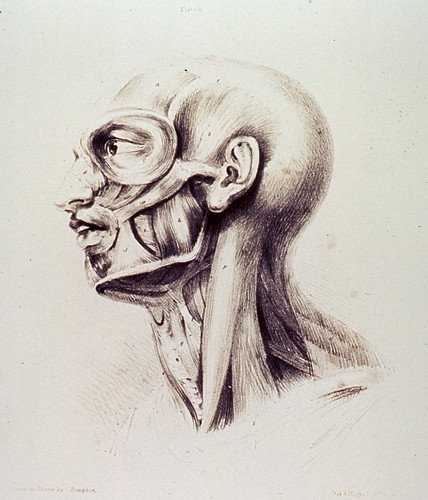What is cervicalgia?
Cervicalgia is a type of neck pain. It usually occurs in people who spend a lot of time doing something that requires a lot of neck movement, such as typing or reading. The main symptom is pain located on the side of the neck that can radiate to the shoulders and arms.
Other symptoms may include headache, nausea, muscle weakness, stiffness and burning sensation when swallowing. If you are reading this article, you are probably not alone! Cervicalgia affects almost everyone at some point in their lives and it’s very common in both men and women. However, it is just as common in men as it is in women — up to 62 percent of cases are unique to each gender.
Other causes of cervical pain may include whiplash, arthritis or a pinched nerve or blood vessel near your neck. All of these symptoms are relatable to Occipital Neuralgia, an excruciating condition that can be overlooked.
What causes cervicalgia?
Symptoms of cervicalgia usually start gradually, but can come on quickly. They may also be triggered by injuries or illnesses that affect your neck muscles or nerves. Other causes may include a tumor, infection, fracture or fracture of the vertebrae in your neck. Cervicalgia is often caused by a disorder called whiplash. Whiplash occurs when you are in a sudden rear-end collision with another object such as a car, truck or an animal. This type of injury may cause some damage to the tissue and nerves in the neck that contribute to cervicalgia.
What is cervicalgia neck pain?
The pain is caused by irritation of the nerves in your neck and it may be the result of a pinched nerve or blood vessel. This type of neck pain can be treated with physical therapy, anti-inflammatory medications, ice packs, rest and homeopathic medicine. Most people will feel better in 2 to 3 weeks, but some cases can persist for months or even years before going away. In some cases, surgery may be necessary to remove a cyst or remove a disc that has rotated or slipped out of its normal position. You should also take care of your health by eating healthy foods and exercising regularly to relieve stress and increase circulation. See your doctor if the pain lasts more than a few days.
What is cervicalgia headache?
Cervicalgia also causes headaches in some cases. The pain can be a minor one that you might not think about, or it could be more intense, causing you to seek out help from a doctor. Cervicalgia headache may be temporary or last for a long period of time. It’s important to see a doctor if the pain is severe and does not go away after resting your neck for a day or two. There are many similarities between these headaches and those caused by Occipital Neuralgia.
The article goes on to discuss different treatments for cervicalgia and ways to prevent it in the future.
How long does cervicalgia last?
Cervicalgia can last a few weeks, months or even years. In some cases, the pain may be chronic and intermittent while in other cases, they may be constant. With cervicalgia, the pain can get worse with the passing of time but usually it’s more manageable. Please review your pillow for pain management.
What are the symptoms of cervicalgia?
The symptoms of cervicalgia depend on the cause. If your pain is the result of whiplash, the symptoms may be intense and last for weeks. However, if you have arthritis or a pinched nerve or blood vessel near your neck, your symptoms may be milder and more short-lived.
If you experience pain on one side of the back of your neck, it’s likely to be cervicalgia. Other signs include numbness in one arm, shoulder and hand with no other reasons for it; joint stiffness in one or both arms; difficulty moving from side to side; difficulty bending at the waist; pain in one or both shoulders; burning sensation when swallowing; and muscle weakness or spasms.
Is cervicalgia a chronic condition?
Cervicalgia is classified as a chronic condition. That means that it is permanent and does not go away without treatment. However, there are ways to relieve some of the pain and discomfort caused by cervicalgia and people can return to normal activity after four weeks with treatment.
Cervicalgia is a type of neck pain that usually occurs because of the movements involved in typing or reading. It’s one of the most common types of neck pain and affects up to 62% of cases to just women.
What is cervicalgia with radiculopathy?
If you have cervicalgia with radiculopathy, that means you are experiencing pain and numbness in the arms due to a nerve compression or inflammation. This is often caused by repetitive neck movements, such as typing or driving. One of the most common causes is an abnormal growth in the spinal cord called a spinal tumor.
Other causes may include multiple sclerosis and infections like Lyme disease, syphilis and HIV. Cervicalgia with radiculopathy can lead to other conditions such as carpal tunnel syndrome or tingling in your extremities due to a pinched nerve.
What type of doctor treats cervicalgia?
Your doctor will first perform a physical examination, including checking for swelling of the neck and head. This can be done by doing an ultrasound or CT scan of your neck. If a cause is found, your doctor may order additional tests and treat the underlying condition. If no cause can be found, your doctor may recommend cervicalgia treatment to relieve pain and inflammation. If you are experiencing severe pain, they will usually recommend that you stay home from work and spend more time resting. The treatment will depend on what caused your pain.
Is cervicalgia a disability?
Cervicalgia can be a disability. It may also be the result of another condition, like an autoimmune disorder or an infection. If it is related to another condition, it will be treated with the correct medication or treatment in order to alleviate the pain. A lot of time people don’t realize that their cervicalgia is a disability because they have other functional limitations, such as a more common neck injury that has been exacerbated by their cervicalgia.
Another reason why many people might not go to get help is because they assume that there’s nothing to do about their pain and that it would go away on its own. However, this isn’t true and your cervicalgia could be prevented or relieved if you got treatment sooner instead of waiting around for it to go away on its own.





